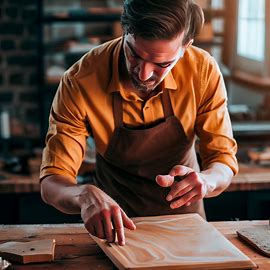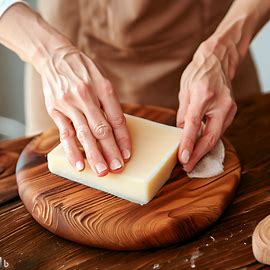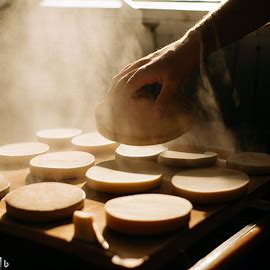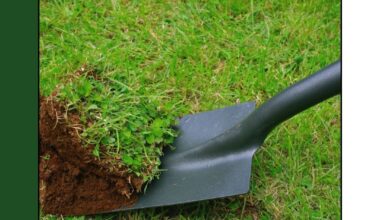Just had a fancy soiree with your favorite people, dazzling them with an assortment of cheeses elegantly displayed on your beloved wooden cheese board? But now, looking at the aftermath, you’re considering if it’s not easier to just buy another one instead of cleaning up the multiple blotches and smudgy stains.
But wait! Before you toss aside that beautiful board in defeat, let me assure you – help is at hand! Armed with some everyday household items and a dash of time-tested wisdom, we can have that cheese board looking pristine again. No magic tricks required!
I know it sounds like big talk right now. Especially as those stubborn fragments of Gouda or Brie stare back insolently from their hardwood haven. But stick around, put our advice on how to clean cheese boards to test…and behold the transformation!
Identifying the Material of Your Cheese Board

When it comes to cleaning a cheese board, it’s essential to first identify the material your board is made of.
This knowledge will help you determine the most suitable cleaning agents and techniques for effectively removing any residual food or bacteria.
Wooden cheese boards are popular due to their natural beauty and sturdy construction. However, they require special care during cleaning to prevent damage. Begin by wiping off any loose crumbs or debris with a soft brush or damp cloth.
Selecting Suitable Cleaning Agents for Different Materials
The next step in properly cleaning your cheese board involves selecting suitable cleaning agents based on its material.
For wooden boards, avoid using harsh chemicals that can strip away the natural oils and cause drying or cracking. Instead, opt for mild dish soap mixed with warm water as an effective yet gentle solution.
Glass or ceramic cheese boards are easier to clean compared to wooden ones. These non-porous materials can be washed with hot soapy water without worrying about ill effects on their integrity.
Proper Cleaning Techniques for Wooden Cheese Boards

Cleaning a wooden cheese board requires some additional steps beyond simply washing it with soapy water.
Start by wetting a sponge or cloth with mild dish soap diluted in warm water.
Gently scrub all surfaces of the board, paying extra attention to areas where stubborn residue may be present.
For tough stains that won’t budge easily, use a mixture of baking soda and lemon juice applied directly onto the affected area. After allowing it to sit for a few minutes, rinse off with warm water and wipe dry thoroughly.
To sanitize your wooden cheese board after cleaning, prepare a mixture of equal parts white vinegar and water. Pour this solution onto the surface of your board and let it sit for a few minutes. Rinse off with warm water and towel dry completely.
Cleaning Tips for Glass or Ceramic Boards
Cleaning a glass or ceramic cheese board is relatively straightforward. Start by rinsing off any remaining food particles under running water. Then, carefully apply a small amount of dish soap to the surface of the board and scrub gently with a sponge or soft brush.
Once all residue has been removed, rinse thoroughly with warm water to ensure no soap remains. Finally, dry the board completely using a clean cloth or allow it air-dry before storing it away.
The Importance of Drying a Cheese Board Properly

Proper drying is crucial after cleaning your cheese board, regardless of its material.
Excess moisture left on the surface can lead to mold growth and warping in wooden boards, while glass or ceramic boards may develop streaks if not dried properly.
After washing your cheese board, use a clean towel to remove as much moisture as possible from all surfaces. Ensure that each groove and crevice is thoroughly dried before proceeding further.
To speed up drying time, leave your washed cheese board in an upright position in an area where there’s good airflow until fully dry.
Maintaining and Caring for Cheese Knives and Tools
In addition to cleaning the actual cheese board itself, proper maintenance of accompanying knives and tools is essential for hygiene reasons.
Start by taking note of any visible debris stuck between blade gaps using either an old toothbrush or soft-bristled brush specifically designed for cleaning cutlery.
Next, wash the knives separately from your cheeseboard using hot soapy water mixed with mild dish detergent. Be sure to pay close attention when handling sharp blades; always exercise caution during this step.
After washing thoroughly, rinse off any soap residue under warm running water followed by careful drying before storing them safely away from other utensils.
Periodic Maintenance and Long-Term Care of the Cheese Board
To prolong your cheese board’s lifespan, there are a few additional steps you can take to maintain its beauty and functionality.
- Apply a food-safe mineral oil or beeswax conditioner to wooden boards every few months. This process helps replenish lost natural oils while also creating a protective barrier against moisture and stains.
- Avoid exposing your cheese board to extreme temperatures or direct sunlight, as this can cause warping or fading over time. Instead, store it in a cool, dry place away from heat sources when not in use.
- Regularly inspect your cheese board for any signs of damage or wear. Cracks, deep scratches, or discoloration may indicate the need for deeper cleaning or potential replacement if necessary.
Conclusion
Keeping your cheese board fresh and beautiful requires proper identification of materials and selecting suitable cleaning agents accordingly.
Implementing specific techniques tailored to each type of cheese board will ensure effective removal of food residue while maintaining their integrity.
Furthermore, proper drying techniques and periodic maintenance contribute significantly to extending their shelf life while preserving their aesthetic appeal.
With these tips in mind, you can proudly display your clean and well-maintained cheese board at any gathering!

